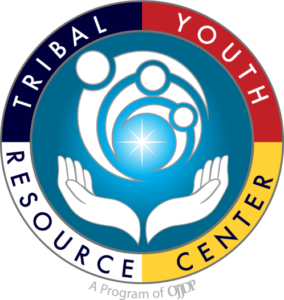By Jacob Metoxen, JHWC Training and Technical Assistance Manager, Tribal Youth Resource Center

Public Law 83-280 (otherwise known as “PL 280”) is federal legislation passed in 1953 that gave six states (Alaska, California, Minnesota, Nebraska, Oregon, and Wisconsin) criminal jurisdiction over tribal members on reservations.[1] Prior to its passage, criminal jurisdiction was shared between federal and tribal governments.[2] Between the passage of PL 280 and 1968, additional states expanded criminal jurisdiction in Indian Country, including Florida, Idaho, and Washington.[3] These states are referred to as “optional PL 280” states.[4] In 1968, PL 280 was amended to require tribal consent prior to a state extending criminal jurisdiction in Indian Country.[5] Since this amendment, no tribe has consented to state criminal jurisdiction.[6] Tribes who are not subject to PL 280 and have not consented to state jurisdiction therefore remain under tribal and federal jurisdiction.
During their funding period, Juvenile Healing to Wellness Court (JHWC) grantees located in PL 280 states may encounter jurisdictional issues that affect their planning and implementation. The Tribal Youth Resource Center (TYRC) provides training and technical assistance to tribal grantees in every state listed above. Our efforts are geared toward understanding the value in assisting with the development of relationships between various jurisdictions. This is partially due to the complexities that arise during government-to-government relationships, particularly those between judicial systems. Many of our JHWC grantees, for example, work closely with county courts regarding tribal youth who are involved in the state justice system.
Through efforts such as early intervention, youth programming, and mentorship, the JHWC model can serve as a bridge between court systems that may not share the same jurisdiction but that have similar objectives of reducing juvenile recidivism. In addition, mechanisms such as state legislation that acknowledge Tribal Court orders and memorandums of understanding between courts have the potential to meet the needs of tribal youth despite jurisdictional limitations. These sorts of partnerships reflect the reality that many young people interact beyond their respective communities. Having stronger partnerships can therefore increase the likelihood that in the event specific resources are necessary, networks are intact that can assist the youth and their families navigate appropriately.
For more information or to request technical assistance regarding this particular topic, please visit www.TribalYouth.org or contact the TYRC Staff at TribalYouth@TLPI.org.
[1] Tribal Crime and Justice: Public Law 280, National Institute of Justice, Found at: Tribal Crime and Justice: Public Law 280 | National Institute of Justice (ojp.gov).
[2] Id.
[3] The United States Attorney’s Office for the District of Minnesota Frequently Asked Questions about Public Law 83-280. Found at: Frequently Asked Questions about Public Law 83-280 (justice.gov).
[4] Id.
[5] Goldberg, Carole, and Valdez Singleton, Heather; Public Law 280 and Law Enforcement in Indian Country – Research Priorities, National Institute of Justice, December 2005.
[6] Id.